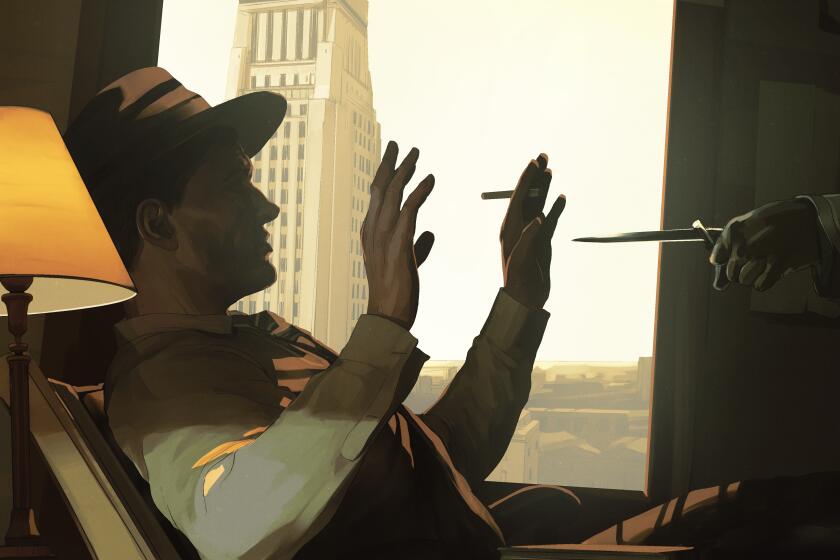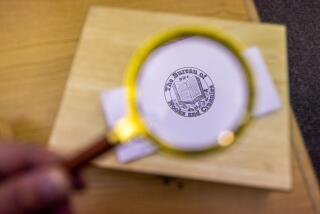‘Mapping Fiction,’ at the Huntington, explores novels’ landscapes, invented and real
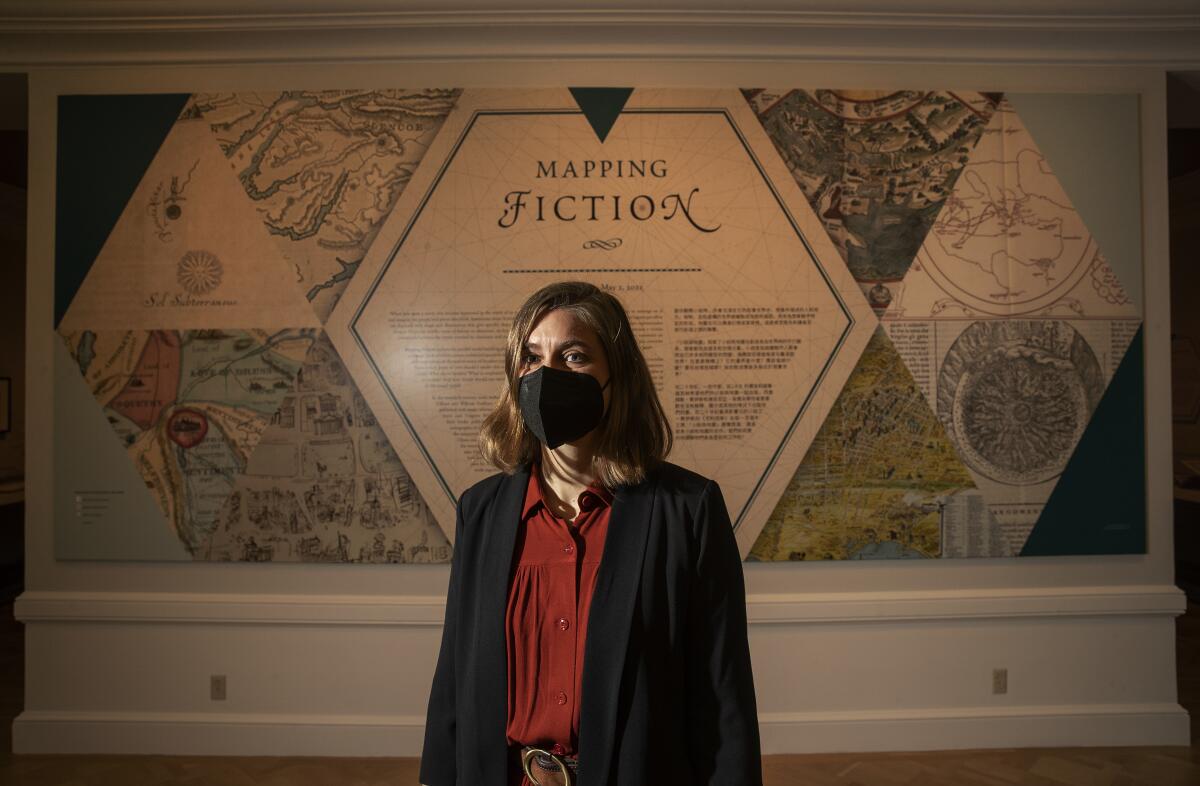
- Share via
Considered one of the most important literary works of the 20th century, James Joyce’s “Ulysses” is incredibly rich in literary allusions, linguistic innovations and detailed descriptions of Dublin, as traversed over the course of one long day by Leopold Bloom. Joyce’s urban landscape was one he never wanted to map — at least not visually.
The Irish modernist adamantly resisted publishing his 1922 novel with a map of Dublin. He wanted readers to construct the novel purely through his words.
“He didn’t want the novel to be explained,” said Karla Nielsen, curator of literary collections at the Huntington Library. “He wanted it to be encountered, he wanted readers to immerse themselves in it.”
But there was no stopping “Ulysses” fans from giving it their all. Joyce’s Dublin features prominently in “Mapping Fiction,” a new exhibit at the Huntington Library, Art Museum, and Botanical Gardens that honors the centennial year of “Ulysses” but ranges far more widely among eras and genres.
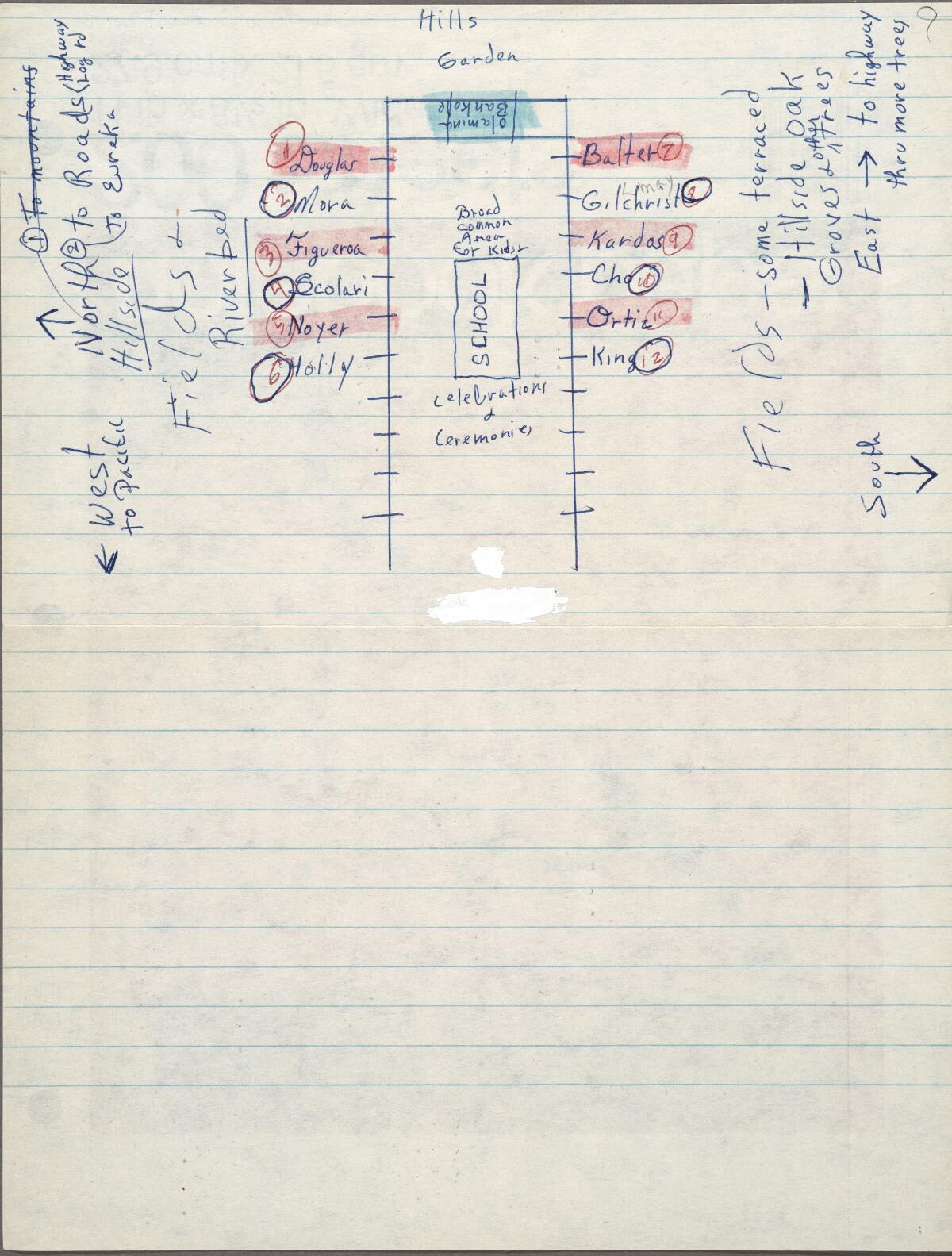
Drawing on the Huntington’s archives, the show explores the construction of made-up worlds through maps and novels, including expressive etchings of Joyce’s Dublin; J.R.R. Tolkien’s map from “The Lord of the Rings” trilogy; Octavia Butler’s visualizations of “Parable of the Talents” and the unpublished “Parable of the Trickster”; Robert Louis Stevenson’s map of “Treasure Island”; and many others.
Rare book fans can also find maps in early editions of Miguel de Cervantes‘ “El Ingenioso Hidalgo Don Quixote de la Mancha” (The Ingenious Gentleman Don Quixote of La Mancha) and Jonathan Swift’s “Gulliver’s Travels.”
Drawing on Octavia E. Butler’s journals and notes, “A Handful of Earth, A Handful of Sky” offers a glimpse inside her journey to becoming a science fiction writer.
Roughly 70 items — maps and manuscripts from the 16th through 20th centuries, mostly from the Huntington collection — are on view inside the Library’s West Hall through May 2.
From Feb. 2-4, a five-panel conference, titled “Joycean Cartographies: Navigating a New Century of Ulysses,” will accompany the exhibit.

“Mapping Fiction” includes a first-edition copy of “Ulysses”; a marked-up typescript draft of its final chapter, “Penelope”; and a seven-print suite by the late artist and printmaker David Lilburn expanding on Joyce’s unique depiction of Dublin, complete with its literary and historical references.
The show is divided into five thematic sections, including “Place Names and Literary Tourism,” which examines how fiction can influence our understanding of real places and their names.
Displayed are American novels that spawned the names of several Los Angeles cities. Alhambra, the city in western San Gabriel Valley, was inspired by Washington Irving’s 1851 book “Tales of the Alhambra”; Hawthorne in the South Bay was named after “The Scarlet Letter” author Nathaniel Hawthorne; and Tarzana, the suburban neighborhood in the San Fernando Valley, was the name of Tarzan creator Edgar Rice Burroughs’ 540-acre ranch.
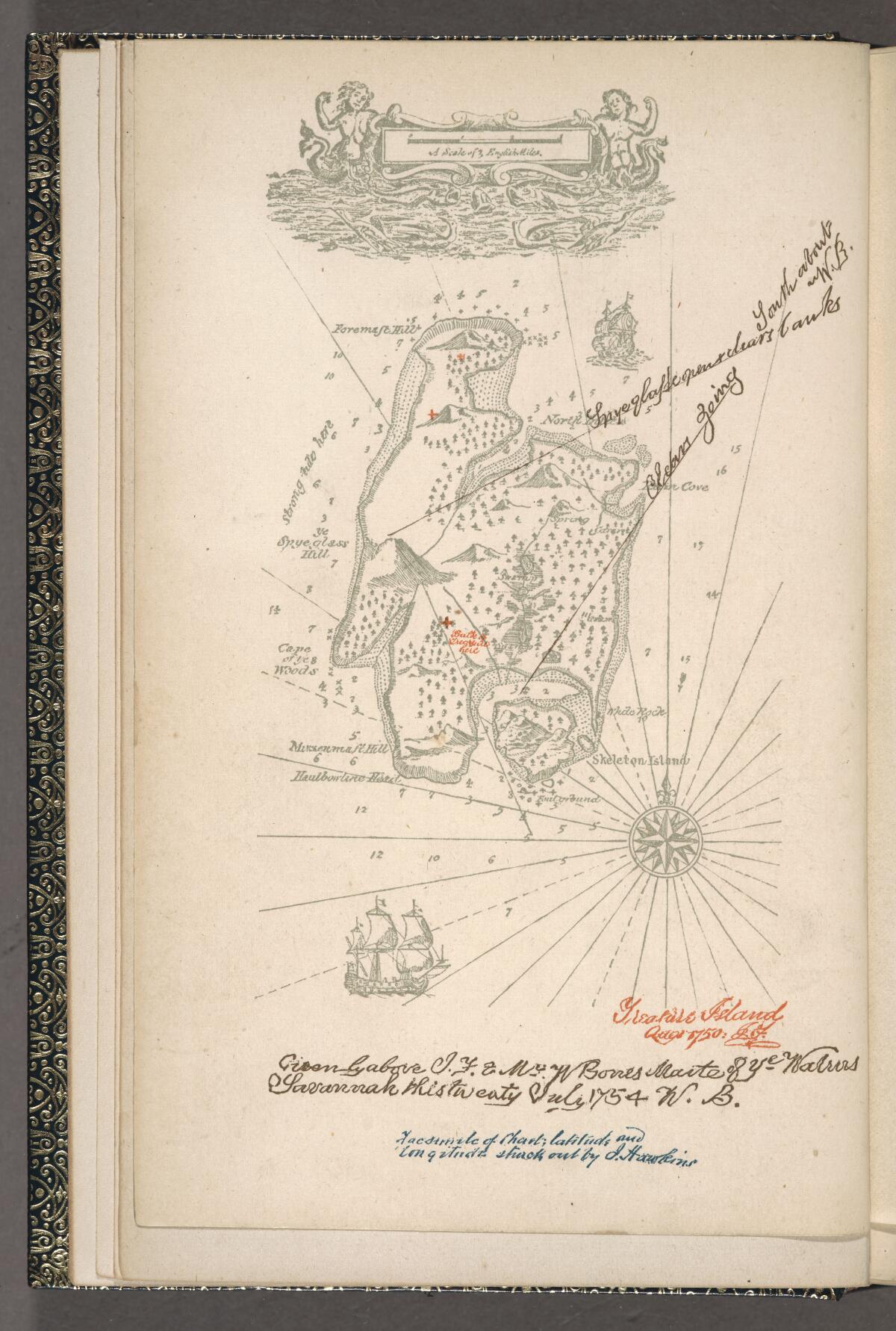
As for the Golden State itself, it is theorized that “California” comes from Garci Rodríguez de Montalvo’s Spanish romance novel “Las Sergas de Esplandían” (The Adventures of Esplandían), published in the 16th century.
The section also features a resplendent Raymond Chandler “Mystery Map of Los Angeles” by Loren Latker, who used K.M. Leuschner’s map of the city to chart locations from Chandler’s detective novels with a detailed key at the bottom.
Another section of the exhibit, “Journeys Around and through the Earth,” focuses on works connected to expeditions real and fictional — and also the ways life and art imitate one another. Lewis Carroll’s “The Hunting of the Snark” sits beside a photo of writer-adventurers Jack and Charmian London on their self-built boat, the Snark, named for Carroll’s book. Jack wrote about their attempt to voyage around the world — cut short when he fell ill — in the 1911 nonfiction book “The Cruise of the Snark.”
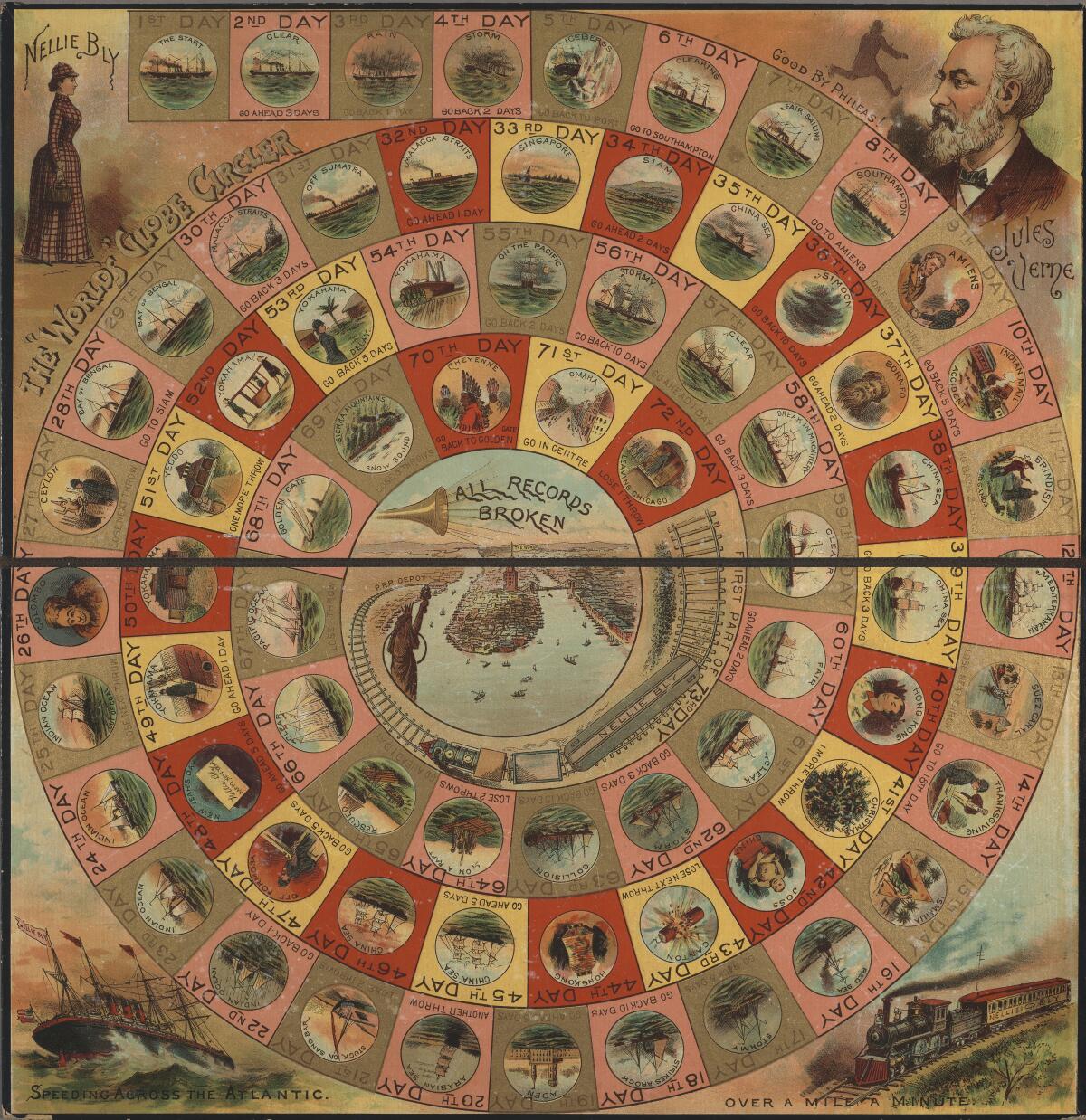
Nearby, an early edition of Jules Verne’s adventure novel “Around the World in 80 Days” is presented alongside a vintage board game inspired by journalist Nellie Bly, who reported on her effort to break the fictional record. She made it in 72 days.
Flawed heroes, dark angels and dashed dreams: Why L.A. and noir are synonymous
Nielsen said the idea for “Mapping Fiction” was conceived after she learned that Joyce had insisted on leaving “Ulysses” unmapped.
His demurral provoked some questions: “How does putting a map in a novel change the way we read the novel? What was it about what he thought a map did that he resisted?”
The idea emerged in 2020 just as museums and libraries closed across the country and nonessential workers were sent home because of the COVID-19 pandemic. As a result, Nielsen did much of the work from home.
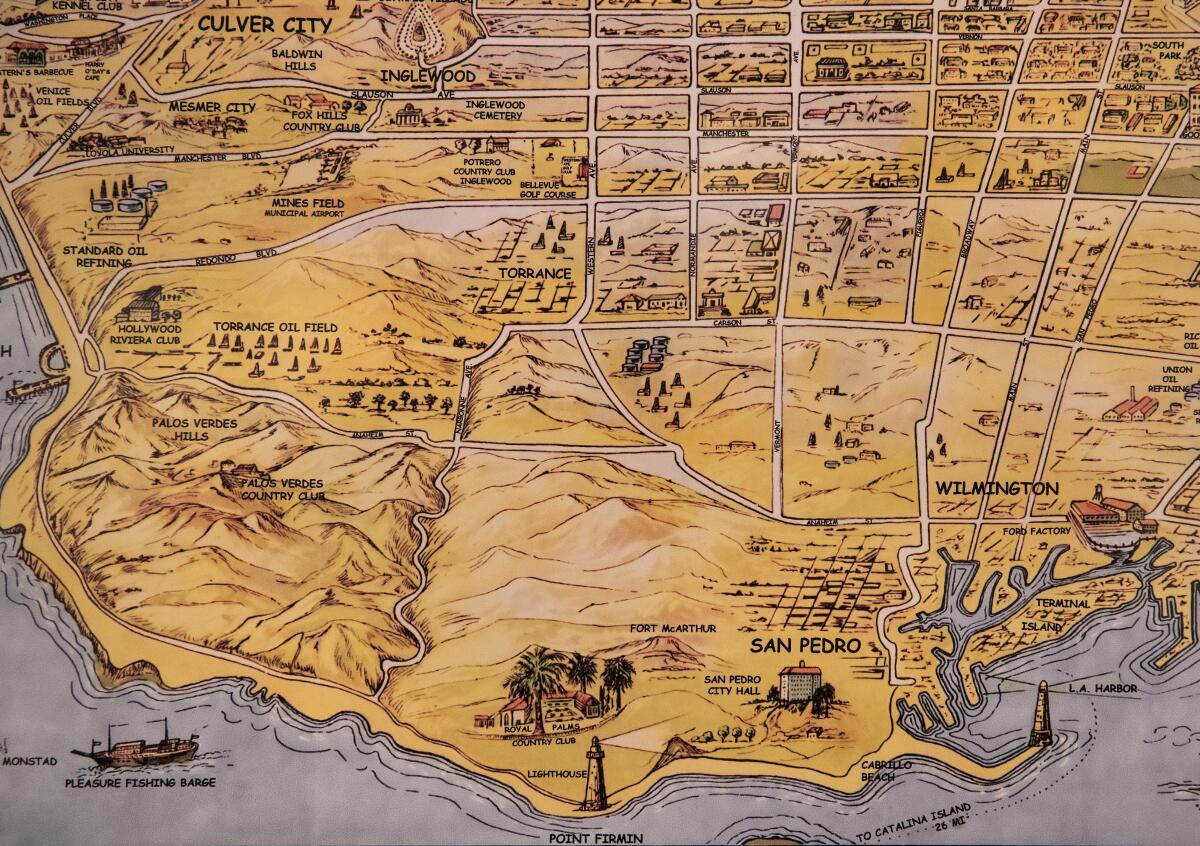
As she ruminated over maps and novels, curating the exhibit became something of a salve for the monotony of life in lockdown. It was armchair travel of the best kind — into other territories and other minds.
“These world-building projects were a way to have an alternative world to inhabit because they’re an invitation to imagine these fictional worlds, whether they’re fantastic or have claims on reality, as inhabitable places,” she said.
But at its core, “Mapping Fiction” is a show about the pleasures of reading and the everyday worlds we construct together — be they fact or fiction — through our individual experiences of reality, “even if no one draws the line in the same place.”
The literary holiday June 16 celebrates James Joyce’s great conflation of life and art “Ulysses.” This year the global revels — virtual, for the most part — will be more the latter than the former.
Nielsen hopes the exhibit inspires viewers to pick up books they’ve never read or heard about, just as curating it did for her. She found “Treasure Island” “so fun” and Ludvig Holberg’s 1741 novel “The Journey to the World Underground” “delightful.”
As it turns out, we don’t have to leave home to travel great distances; books are close at hand, and the Huntington isn’t too far either.
“Mapping Fiction” will be on view Jan. 15-May 2 in the Library’s West Hall.
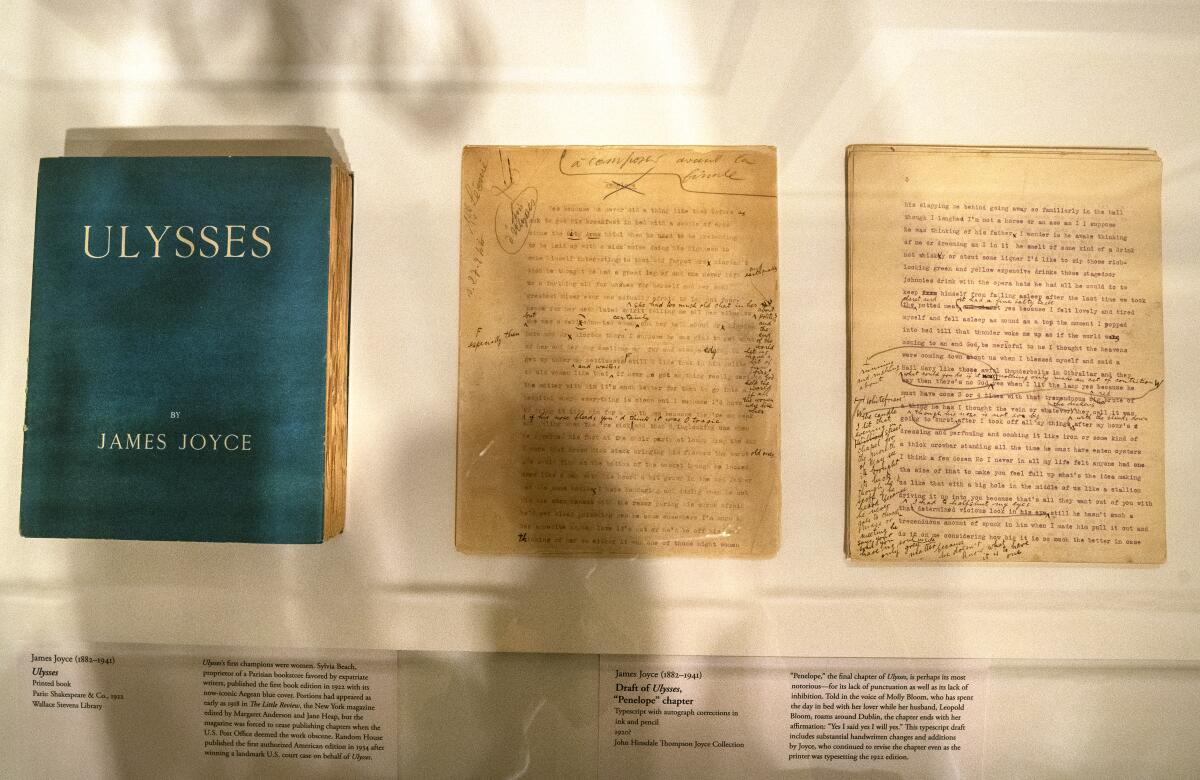
More to Read
Sign up for our Book Club newsletter
Get the latest news, events and more from the Los Angeles Times Book Club, and help us get L.A. reading and talking.
You may occasionally receive promotional content from the Los Angeles Times.
